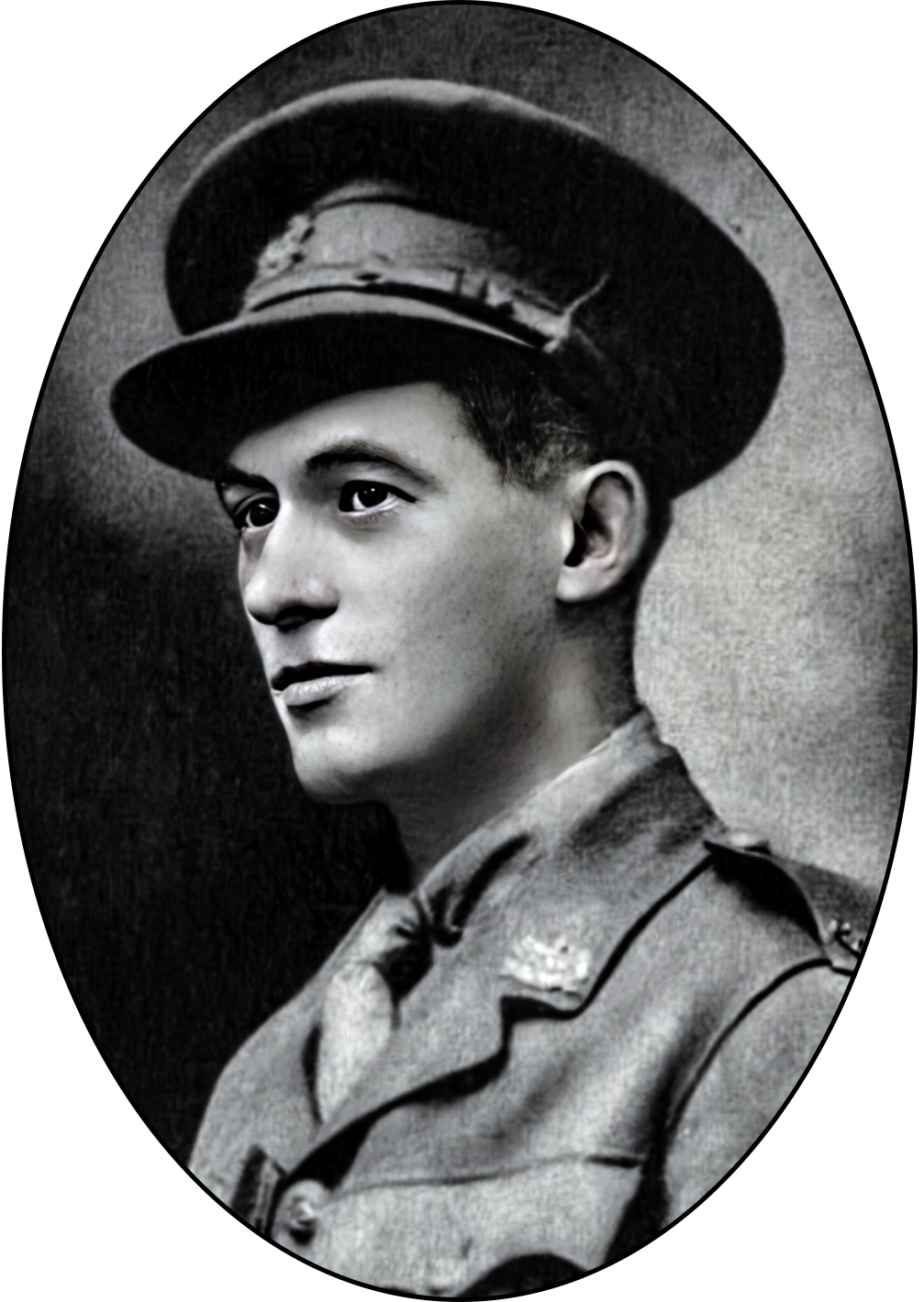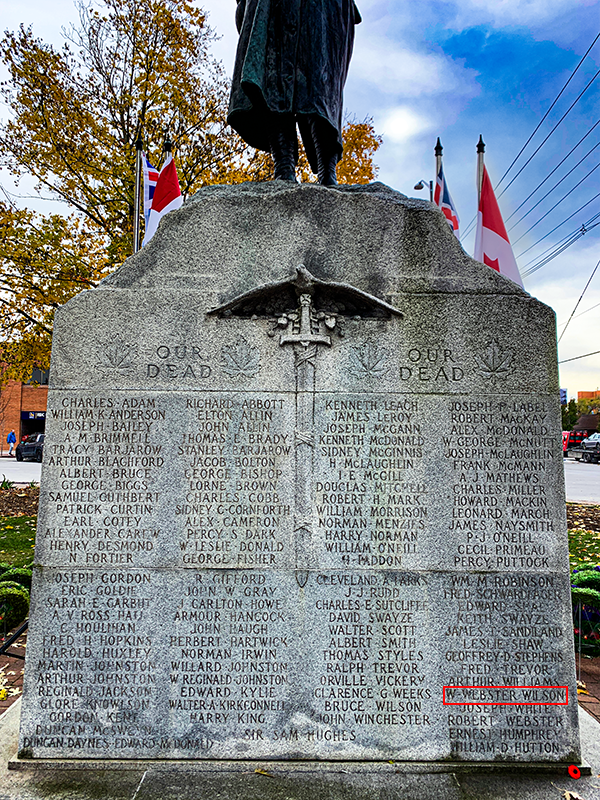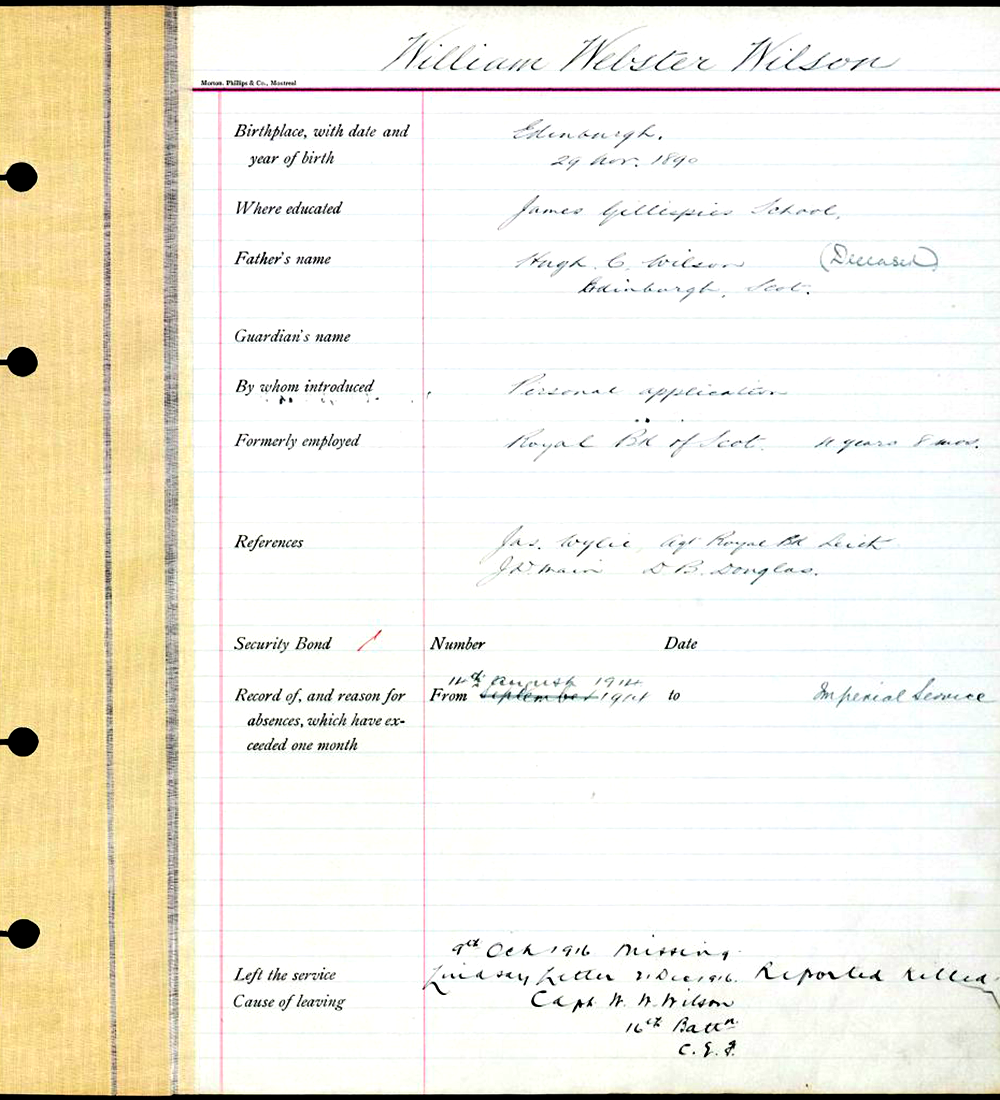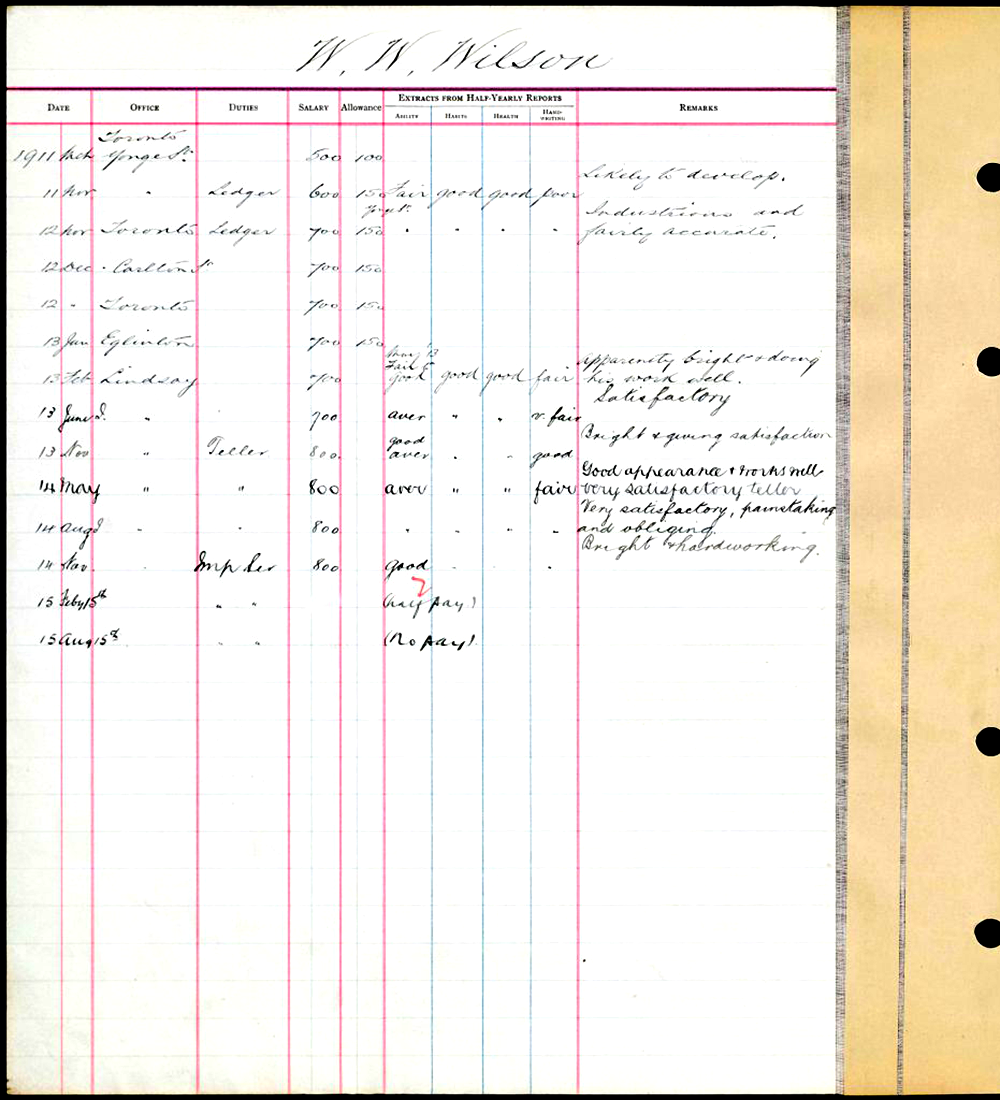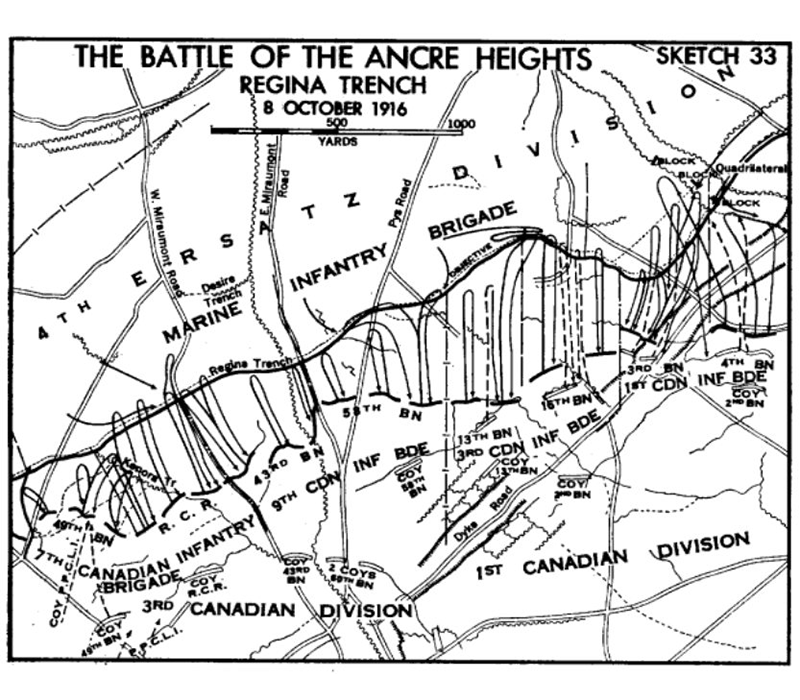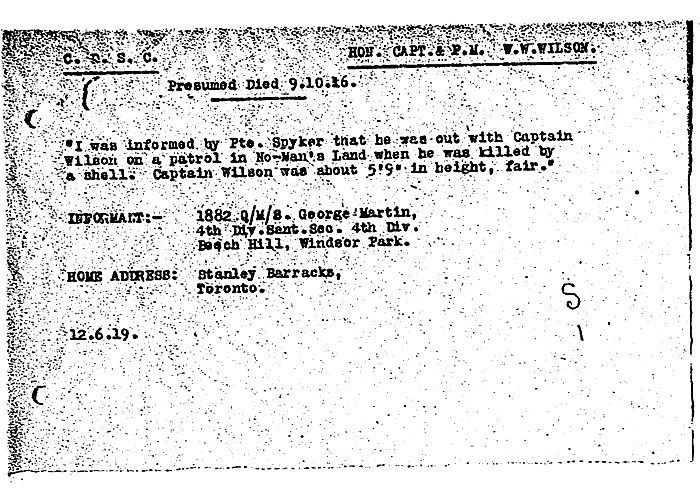Captain William Webster Wilson
In 2016, a research report was received suggesting that the grave of an unknown Canadian captain buried at Adanac Military Cemetery in France could be identified.
In December 2024, the Canadian Armed Forces identified the grave as that of Captain William Webster Wilson.
- Born 29 November 1890 in Edinburgh, Scotland
- Died 9 October 1916 at the age of 25
- Died while serving with the 16th Canadian Infantry Battalion (Canadian Scottish), Canadian Expeditionary Force (CEF)
- Commemorated on the Canadian National Vimy Memorial
- Buried at Adanac Military Cemetery, Plot IV, Row E, Grave 7
William Webster Wilson was born on 29 November 1890 in Edinburgh, Scotland to Hugh Cunningham and Mary Ann Lyell (née Webster) Wilson. William had one brother, Hugh Currie Wilson.
After being educated at James Gillespie’s School, William joined the Leith branch of the Royal Bank of Scotland in June 1906, aged 15. He worked at several branches in Edinburgh before resigning in February 1911 to join the Bank of Montreal, shortly after his mother’s death. William initially worked in Toronto, before settling with the branch in Lindsay, Ontario. William’s human resources ledger from the Bank of Montreal describes him as “Very satisfactory, painstaking and obliging” and “Bright & hardworking.”
Shortly after William moved to Ontario, his father and brother settled on a farm in Gilgandra, New South Wales, Australia. Despite the distance, the family remained in close contact.
Before the First World War, William served with local militia units in both Scotland and Canada. In Lindsay, William was a captain with the 45th Victoria Regiment when war was declared.
In September 1914, William was among the thousands of men who travelled to Valcartier, Quebec, following the outbreak of war. William enlisted on 23 September as an Honorary Captain and Paymaster with the 1st Canadian Divisional Signal Company. After training in Quebec and England, Captain Wilson was taken on strength by his unit in France on 7 April 1915. On 11 January 1915, Captain Wilson was attached to the 1st Divisional Headquarters and, by 1916, he was attached to the Canadian Section of General Headquarters, 3rd Echelon of the British Expeditionary Force.
By the fall of 1916, gruelling fighting and heavy losses sustained during the Somme Offensive meant that trained men were desperately needed on the front lines. While the Somme Offensive was originally intended to break the stalemate of trench warfare on the Western Front, fighting continued for months. Canadian units were involved in the last three months of the fighting, from September 1916 onwards. Possibly as a result of his extensive militia experience and his recent completion of a machine gun training course, Captain Wilson was attached to the 16th Canadian Infantry Battalion (Canadian Scottish), CEF on 30 September 1916.
On 8 October 1916, the Canadian Corps participated in the Battle of the Ancre Heights, part of the broader Somme Offensive. The 16th Battalion was one of eight Canadian battalions tasked with capturing Regina Trench, the Canadian name given to a strategically important German defensive position fortifying the high ground on Thiepval Ridge. At 04:50 in the morning, in the dark and with cold rain falling, units made their initial advance under the cover of a creeping artillery barrage. Despite a preparatory artillery barrage, the 16th Battalion discovered the barbed wire that protected their objectives was intact. The official history describes the 16th Battalion as “caught at the wire by a storm of rifle and machine-gun fire.” Despite some initial successes, the attack was a failure, and the Canadian Corps was forced back to its starting position amid heavy casualties.
Captain Wilson was reported missing on 9 October 1916. From Australia, his brother, Hugh, submitted an inquiry to the Australian Red Cross Wounded and Missing Bureau the following month searching for news of his older brother. It was not until 24 June 1919 that Hugh received a second-hand account that stated that Captain Wilson had been killed by a shell in no man’s land.
In December 1916, the Lindsay, Ontario newspaper “The Post” reported that Captain Wilson was still missing. An employee at the bank had written to the 16th Battalion for news of his colleague and friend. The newspaper published the response, which was dated 8 December 1916: “The Commanding Officer wishes me to answer your letter of the 16th November, and to express his deep regret that he cannot give any satisfactory news of Captain Wilson. This battalion attacked the German trenches on the noon of October 9th, and Captain Wilson led his platoon; he was seen struck by a bullet or shell, but owing to the very severe fire, it was impossible to do anything for him. According to orders, battalion fell back, but Captain Wilson did not come back with it. There is always a possibility that he was taken prisoner. So far, I cannot give you any definite news. The Commanding Officer wishes me to express to you and all his friends, his deep regret in losing a very fine officer and gentleman.”
As months passed, hope faded that Captain Wilson was still alive, and he was officially presumed killed in action. With no known grave, his name was inscribed on the Canadian National Vimy Memorial, which commemorates those of the Canadian Expeditionary Force with no known grave who died in France during the First World War. He is also commemorated on the Lindsay Cenotaph.
In 2016, external researchers submitted a report to the Commonwealth War Graves Commission (CWGC) regarding Plot IV, Row E, Grave 7 at Adanac Military Cemetery, France. The grave was partially identified as “a Captain of the Great War 16th Bttn Canadian Inf.” The researchers noted that only three captains from the 16th Battalion are commemorated on the Canadian National Vimy Memorial, only one of whom had died on the Somme. They surmised that the missing captain who had died on the Somme had to be the occupant of the grave in question. Upon review, however, none of the three missing 16th Battalion captains could plausibly match the location of the original grave before it was concentrated to Adanac Military Cemetery. The CWGC forwarded the case to the Directorate of History and Heritage (DHH) for further investigation.
Extensive historical research undertaken by the DHH using archival sources – including war diaries, personnel files, and contemporary concentration and exhumation reports – has determined that the grave could only belong to Captain Wilson. While Captain Wilson was commemorated as a member of the 1st Divisional Signal Company, archival records confirmed that he had been transferred to the 16th Battalion, CEF shortly before his death. Witness testimonies from the Australian Red Cross Wounded and Missing Bureau and his commanding officer place Captain Wilson in action with the 16th Battalion near the original location of the grave at the time of his death.
The identification of Captain William Webster Wilson of the 16th Canadian Infantry Battalion (Canadian Scottish), CEF was confirmed by the Casualty Identification Review Board in December 2024. The Casualty Identification Review Board is made up of members from the DHH, and includes participants from Veterans Affairs Canada, the Canadian Museum of History, the Canadian Forces Forensic Odontology Response Team, and the CWGC.
A headstone rededication ceremony will take place at the earliest opportunity in France at Adanac Military Cemetery, which is maintained by the CWGC.
For more information on Captain William Webster Wilson, you can consult his personnel file through Library and Archives Canada.
